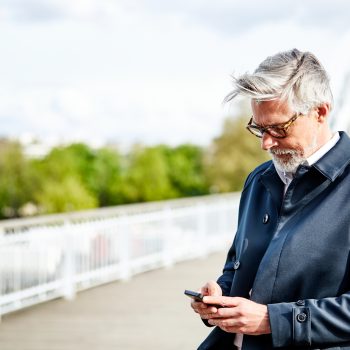Yoga for patients with localized prostate cancer and undergoing radiotherapy? The effects of this form of physical activity were evaluated by a team of researchers at the University of Pennsylvania in a paper published in the International Journal of Radiation Oncology, Biology, and Physics. At the end of the trial, the authors observed that patients who had attended a yoga course twice a week during radiotherapy reported a lower level of fatigue and an improvement, or at least no worsening, of sexual and urinary function, compared to those who had not performed yoga. We talk about this topic with Professor Marta Scorsetti, head of the radiotherapy and radiosurgery unit at Humanitas.
Research
Prostate cancer is the most widely diagnosed cancer in men, particularly in older age groups. When its treatment is localized, it may involve external radiotherapy, a form of therapy that may have side effects on urinary function and sexual well-being, mainly with the onset of erectile dysfunction.
The researchers completed the trial with fifty patients undergoing radiotherapy over a period of six to nine weeks. Those who had already practiced yoga, or had already undergone a course of radiotherapy, or those with a non-localized tumor, with distant metastases, were excluded from the list of participants.
The participants were then randomly assigned to two groups: in the first group, twenty-two patients participated in yoga lessons twice a week, each 75 minutes long, in which the different positions of the discipline were performed, from sitting, standing or on their backs with the necessary modifications to meet the patients’ needs. The second group, with twenty-eight patients, was the control group.
“This is an interesting study, well constructed with careful selection and evaluation of patients – commented Professor Scorsetti. The benefits of physical activity in cancer patients are well known. Moderate physical activity during radiation therapy can in theory have a positive effect on patients’ quality of life, stimulating the immune system and strengthening muscle mass, helping them to tolerate treatment better.
The results
First of all, patients were evaluated for their level of fatigue, to what degree it was and what impact it had on their daily lives, self-reported by men themselves through a questionnaire. The first questionnaire was administered between the second and third week before the start of radiotherapy and then twice a week during therapy and finally within a week of the last yoga lesson or radiotherapy session, depending on the group.
Before treatment, both groups had reported low levels of fatigue; then, with the therapy in progress, differences emerged: only those who had yoga continued to report low levels of fatigue. As expected, fatigue in the control group began to increase around the fourth or fifth week of treatment.
Another questionnaire was administered to assess the erectile function of patients on a scale: scores below twelve indicated moderate to severe erectile dysfunction.
Both groups started with a score of eleven; this level remained unchanged in the yoga group while it worsened in the control group. The impact of yoga may have been on the pelvic floor muscles resulting in benefits on sexual function and even urinary function. In the yoga group, researchers still report, emotional well-being had also improved.
“Studies like this reinforce the idea of caring for the patient in his totality, considering not only the purely clinical aspects but also those less explored such as psychology – Scorsetti points out. Helping patients with physical activity, nutritional advice or psychological support can not only limit the appearance of side effects but also reduce their impact on the serenity and daily life of the patient.










